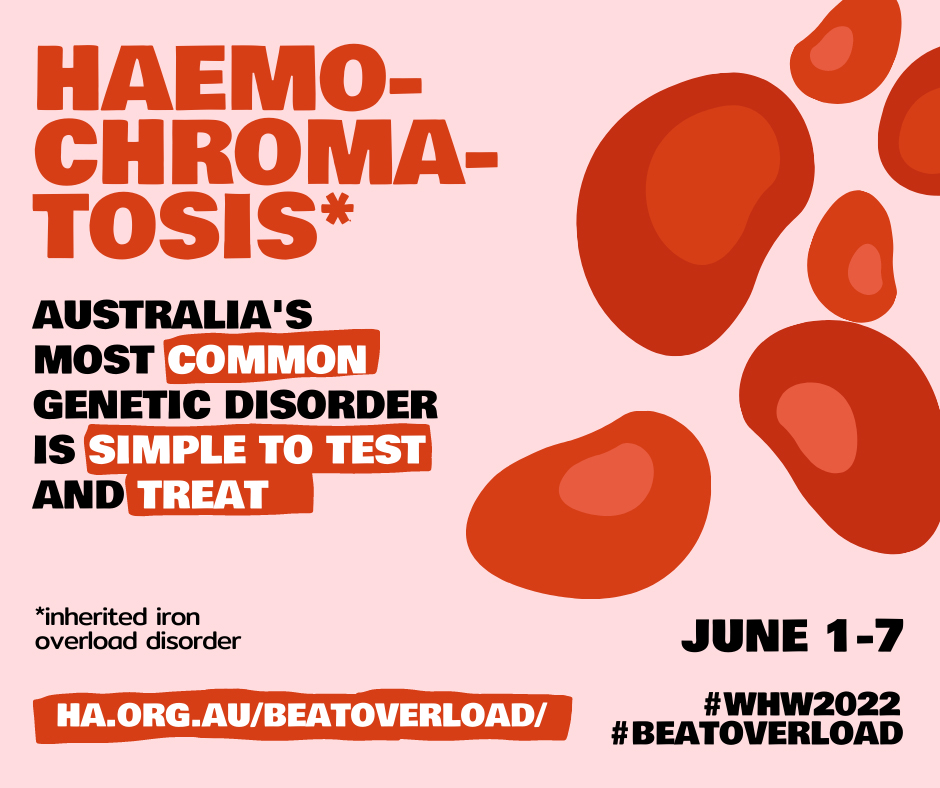
With World Haemochromatosis Week (June 1-7) almost upon us, it is timely to consider the important role that health care professionals can play in improving outcomes for people with haemochromatosis, and the resources available to help achieve this goal.
Hereditary haemochromatosis is the most common genetic disorder among Australians of northern European ancestry, with around 1 in 200 having a genetic predisposition to iron overload. If left unchecked, haemochromatosis can manifest as a range of chronic and potentially fatal conditions, including liver dysfunction and cancer, osteoarthritis and heart disease.
Fortunately, there are simple measures that can be used to both detect and treat haemochromatosis. Iron indices can be assessed through blood testing by pathology services to identify individuals with existing iron overload; these individuals can then receive a genetic diagnosis through the MBS-listed HFE gene test and first-degree relatives notified for cascade screening.
The standard treatment for haemochromatosis is venesection (i.e. blood donation), and most individuals with a confirmed diagnosis of haemochromatosis are eligible for treatment through Australian Red Cross LifeBlood’s Therapeutic Donor program. Through this program, people with haemochromatosis mitigate their disease risk by having their iron stores depleted through blood donation, while at the same time providing a valuable resource for Australian Red Cross LifeBlood to deploy in the treatment of those needing a blood transfusion – a rare win-win situation.
Haemochromatosis Australia (HA) is the peak body providing support for, and representing the interests of, Australians with hereditary haemochromatosis. HA provides a range of resources for health professionals on its website, including links to the very popular and informative podcast series IronMatters. HA has worked with Australian Primary Health Care Nurses Association (APNA) on the development of an accredited online module Haemochromatosis for Nurses and with Reed Medical to develop free online learning modules accredited for CPD by The Royal Australian College of General Practitioners and Australian College of Rural and Remote Medicine. This module is available on the ThinkGP platform.
While the detection and management of haemochromatosis is simple, a lack of community awareness about the condition results in many patients being diagnosed only after considerable organ damage has already occurred. With advances in genomics technologies, it is hoped that a superior, cost-effective screening model can be developed whereby the genetic risk of haemochromatosis is detected early, before the development of iron overload, so that a monitoring plan can be implemented to ensure that iron levels are maintained within safe ranges and individuals never develop iron-related disease. This will be key to achieving HA’s mission: that no Australian experiences harm from absorbing and storing too much iron.
Disclaimer: This article was provided by Haemochromotosis Australia. While every effort has been made to ensure the information is accurate, North Western Melbourne Primary Health Network does not warrant or represent the accuracy, currency and completeness of any information or material included within.




